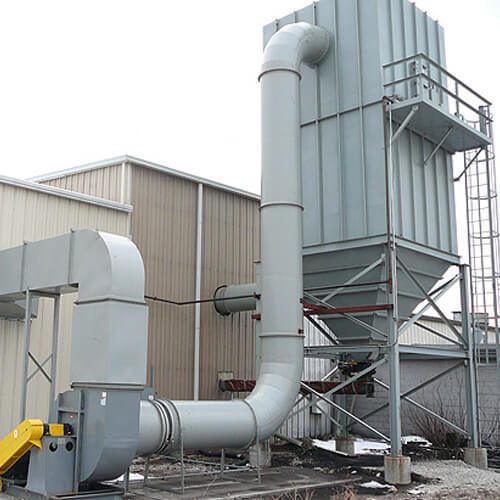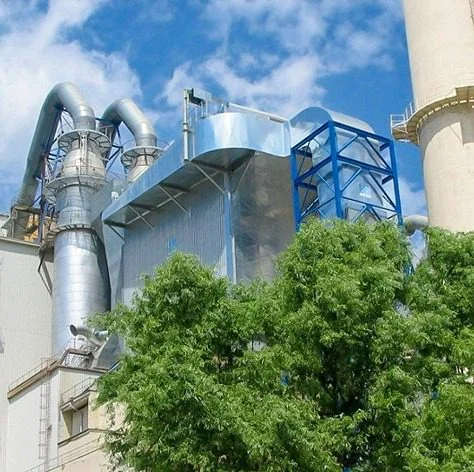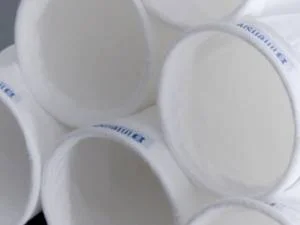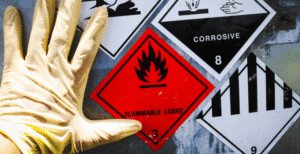The hum of a power plant, a constant thrumming that powers our homes and industries, is often accompanied by a less-than-desirable byproduct: oxid siřičitý (SO₂). This noxious gas, released during the combustion of fossil fuels like coal and oil, is a significant contributor to acid rain, respiratory problems, and overall environmental degradation. Fortunately, a crucial technology known as Flue Gas Desulfurization (FGD) stands as a vital shield, mitigating the harmful effects of SO₂ emissions.
FGD, often referred to as scrubbing, is a suite of technologies employed in power plants and other industrial facilities to remove SO₂ from the flue gases – the exhaust gases released from the combustion process. Understanding the intricacies of FGD requires a deeper dive into the science, technology, and economic considerations that underpin its implementation.
The Silent Threat: Understanding Sulfur Dioxide's Impact
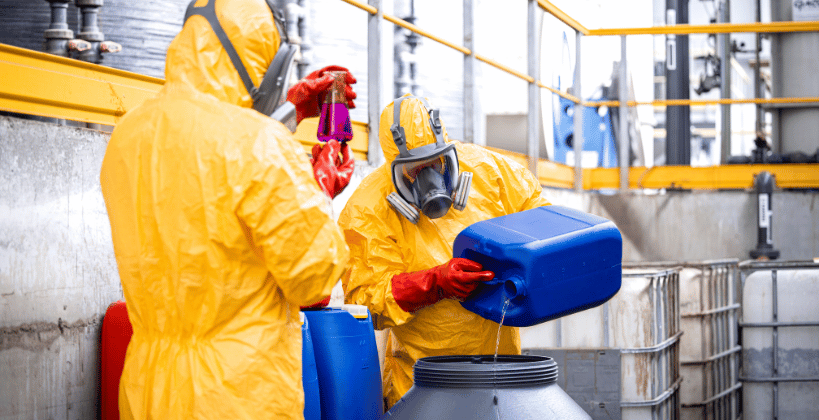
Before delving into the solutions, it’s crucial to understand the problem. SO₂ is a colorless gas with a pungent odor. Its environmental impact is multifaceted and far-reaching. When released into the atmosphere, it reacts with water vapor and other atmospheric components to form sulfuric acid and sulfate particles. These particles contribute to acid rain, which damages ecosystems, corrodes buildings and monuments, and acidifies bodies of water, harming aquatic life.
Furthermore, SO₂ itself is a respiratory irritant. Exposure to elevated levels can cause breathing difficulties, particularly for individuals with asthma and other respiratory conditions. The fine particulate matter formed from SO₂ also exacerbates these health problems, increasing the risk of cardiovascular disease and other serious health issues.
The implications of unchecked SO₂ emissions on a global scale are undeniable. This reality has spurred the development and implementation of stringent regulations on SO₂ emissions in many countries, making FGD technologies a necessity for power plants that rely on sulfur-containing fuels.
Objevte naši nabídku řešení:
The Arsenal of Scrubbing Technologies: A Look at Different FGD Methods
FGD is not a monolithic technology; rather, it’s a collection of different methods, each with its own advantages and disadvantages. The choice of a specific FGD system depends on factors such as the type of fuel burned, the desired level of SO₂ removal, the available space, and the cost-effectiveness of the technology. Several prominent FGD methods are used worldwide, each employing different chemical principles to capture SO₂.
- Wet Scrubbing: This is the most widely used FGD technology, accounting for a significant portion of installed capacity globally. Wet scrubbing involves spraying an alkaline slurry, typically lime (calcium oxide) or limestone (calcium carbonate), into the flue gas stream. The SO₂ reacts with the alkali, forming calcium sulfite, which is then oxidized to calcium sulfate, commonly known as gypsum. This gypsum can be sold as a raw material for construction purposes, making wet scrubbing a relatively economical option. The process generally achieves high SO₂ removal efficiencies, often exceeding 95%.
- Dry Scrubbing: In contrast to wet scrubbing, dry scrubbing uses a dry alkali absorbent, such as hydrated lime, to remove SO₂ from the flue gas. The absorbent is typically injected into the flue gas stream as a fine powder. The SO₂ reacts with the alkali to form a solid waste product, which is then collected by a particulate control device, such as a baghouse filter. Dry scrubbing is simpler in design and operation than wet scrubbing, but it generally achieves lower SO₂ removal efficiencies.
- Spray Dryer Absorption (SDA): SDA is a type of dry scrubbing that involves spraying an alkaline slurry into a spray dryer, where the water evaporates, leaving behind a dry powder containing the SO₂ reaction products. SDA is often used in conjunction with a baghouse filter to collect the solid waste. This method is often favored in situations where water availability is a constraint.
- Seawater Scrubbing: This specialized technique utilizes the natural alkalinity of seawater to absorb SO₂. The flue gas is scrubbed with seawater, which neutralizes the SO₂. The treated seawater is then discharged back into the ocean, typically after a neutralization process to adjust the pH. Seawater scrubbing is particularly well-suited for coastal power plants with access to large volumes of seawater.
- Regenerative Processes: Unlike the previously mentioned methods, regenerative FGD processes aim to recover the SO₂ in a usable form. These processes typically use an absorbent that can be regenerated, allowing for the recovery of elemental sulfur or sulfuric acid. Regenerative processes are more complex and expensive than non-regenerative processes, but they can be economically viable in certain situations where there is a market for the recovered sulfur or sulfuric acid.
Beyond the Basics: Advanced Trends and Future Innovations
The field of FGD technology is constantly evolving, driven by the need for more efficient, cost-effective, and environmentally friendly solutions. Several advanced trends and innovative approaches are shaping the future of FGD.
- Enhanced Absorbents: Research is ongoing to develop more effective and efficient absorbents for SO₂ capture. These new absorbents aim to improve SO₂ removal efficiencies, reduce the cost of absorbent materials, and minimize the amount of waste generated.
- Hybridní systémy: Combining different FGD technologies into hybrid systems can optimize performance and address specific challenges. For example, a hybrid system might combine a wet scrubber with a dry scrubber to achieve high SO₂ removal efficiencies while minimizing water consumption.
- CO₂ Capture Integration: As concerns about climate change grow, there is increasing interest in integrating CO₂ capture technologies with FGD systems. This integration could potentially allow power plants to capture both SO₂ and CO₂, significantly reducing their overall emissions.
- Digitalization and AI: The application of advanced data analytics and artificial intelligence (AI) is transforming the operation and management of FGD systems. AI-powered systems can optimize process parameters, predict equipment failures, and improve overall efficiency.
The Economic and Regulatory Landscape
The implementation of FGD technologies is not without its economic considerations. The capital costs of installing FGD systems can be substantial, and operating costs, including the cost of absorbents, energy, and waste disposal, can also be significant.
However, the economic benefits of FGD, such as reduced healthcare costs associated with air pollution and the avoidance of environmental damage, are often overlooked. Furthermore, the production of valuable byproducts like gypsum can offset some of the costs of FGD.
Government regulations play a crucial role in driving the adoption of FGD technologies. Strict emission standards and incentives for clean energy technologies can encourage power plants to invest in FGD and other pollution control measures. The economic viability of FGD is also affected by the price of fuel, the cost of waste disposal, and the availability of markets for recovered byproducts.
Ensure Cleaner Air with Intensiv-Filter Himenviro’s Advanced FGD Solutions

Ensure cleaner air and regulatory compliance with our advanced Flue Gas Desulfurization (FGD) technology. Intensiv-Filter Himenviro offers high-efficiency, cost-effective, and sustainable SO₂ removal solutions tailored for power plants and industries. Minimize environmental impact while optimizing operational performance. Partner with us today for reliable and innovative air pollution control systems that meet global standards!
Conclusion: A Breath of Fresh Air
Flue Gas Desulfurization is a critical technology for mitigating the harmful effects of SO₂ emissions from power plants and other industrial facilities. While the technology continues to evolve, its core objective remains the same: to protect human health and the environment from the damaging consequences of air pollution. As the world grapples with the challenges of climate change and air quality, FGD will undoubtedly play an increasingly important role in creating a cleaner and more sustainable future. By understanding the science, technology, and economic considerations that underpin FGD, we can better appreciate its vital contribution to a healthier planet.

